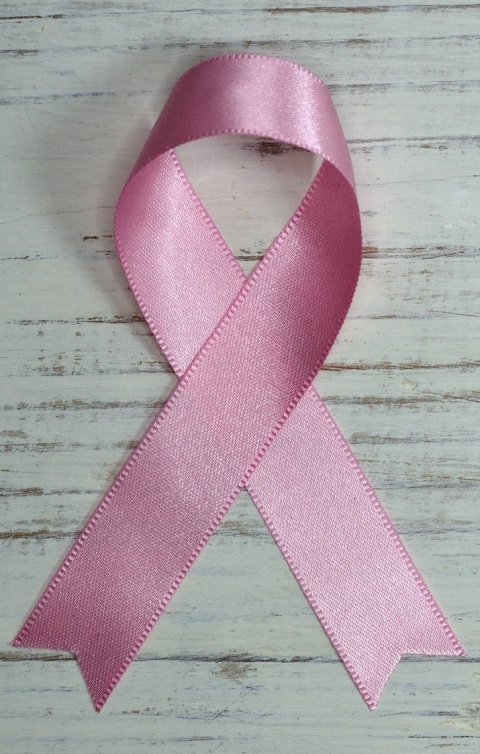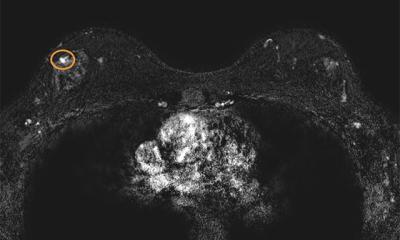News • Breast cancer
Double mastectomy slashes risk - but not for all women
Healthy women who carry a breast cancer-causing mutation in the BRCA1 gene, not only reduce their risk of developing the disease but also their chances of dying from it if they have both breasts removed, according to new research presented at the 11th European Breast Cancer Conference.
However, the study also found that for women with a mutation in the BRCA2 gene, there was no difference in their chances of dying from the disease whether they opted to have their breasts removed (bilateral risk-reducing mastectomy or BRRM) or chose to have closer surveillance instead. The study of 1696 BRCA1 mutation carriers and 1139 BRCA2 mutation carriers in The Netherlands is the first to prospectively follow healthy women, who opted for either BRRM or surveillance, in order to compare their overall risk of dying from any cause and their risk of dying from breast cancer.
The research gives these women valuable information about their overall risk of death and of dying from the disease on which to base their decisions
Isabel Rubio
The women were selected from the national Hereditary Breast and Ovarian Cancer Netherlands (HEBON) database. They were healthy, with no previous history of cancer, and had retained both breasts and ovaries at the time of the DNA diagnosis that detected the BRCA1/2 gene mutations. The women were followed from the time of their DNA diagnosis (the earliest was in January 1995) through to June 2017, or the time of their death or last follow-up appointment. During this time 38% (652) of the BRCA1 carriers and 32% (361) of the BRCA2 mutation carriers underwent BRRM. After an average follow-up time of approximately nine to 11 years, there were seven cases of breast cancer and 11 deaths (one due to breast cancer) among the BRCA1 mutations carriers who had BRRM, while there were 269 breast cancer cases and 50 deaths (19 due to breast cancer) in the surveillance group. At the age of 65, overall survival among BRCA1 mutation carriers was 90% in the BRRM group compared to 83% in the surveillance group. At the same age, breast cancer-specific survival was 99.6% in the BRRM group compared to 93% for the surveillance group. In other words, BRCA1 mutation carriers opting for BRRM had a lower risk of dying from breast cancer than BRCA1 mutation carriers under surveillance.
For BRCA2 mutation carriers, after an average follow-up time of approximately nine to ten years, there were no cases of breast cancer and two deaths (none due to breast cancer) in the BRRM group, and 144 breast cancer cases and 32 deaths (seven due to breast cancer) in the surveillance group. However, at the age of 65, while overall survival was 95% for the BRRM group compared to 88% for the surveillance group, breast cancer-specific survival was 100% for the BRRM group compared to 98% for the surveillance group. This means that the risk of dying from breast cancer was low for all BRCA2 mutation carriers, and there was no difference between the BRRM group and the surveillance group.
Dr Annette Heemskerk-Gerritsen, a post-doctoral researcher at the Erasmus University Medical Centre (Rotterdam, The Netherlands), told the conference: “For BRCA1 mutation carriers, bilateral risk-reducing mastectomy not only drastically reduces the risk of developing breast cancer but, as a consequence, also improves breast cancer-specific survival when compared to surveillance. For BRCA2 mutation carriers, however, BRRM seems to lead to similar breast cancer-specific survival as surveillance, despite the reduced breast cancer risk.” She said the difference in the chances of dying from breast cancer between BRCA1 and BRCA2 mutation carriers supports the idea that these two mutations result in different types of tumours. “We observed that BRCA2-associated breast cancers were diagnosed with more favourable characteristics than BRCA1-associated breast cancers. BRCA2-associated cancers were diagnosed at an older age, better differentiated, and were more likely to have receptors for the hormones oestrogen and progesterone and for the human epidermal growth factor (HER2), suggesting that BRCA2 mutation carriers face a better prognosis at diagnosis than BRCA1 mutation carriers.”

The results of the study mean that women with BRCA2 gene mutation can choose between BRRM or surveillance knowing that it makes little difference to whether or not they will die from breast cancer. However, they will still be at increased risk of developing the disease, and the treatment for it can be unpleasant and carries its own risks. Dr Heemskerk-Gerritsen said: “For those BRCA2 mutation carriers who are struggling with the difficult choice between breast cancer surveillance and BRRM because they wish to keep their breasts, and who are willing to face the risk of developing breast cancer and undergoing essential treatment after diagnosis, it might be a relief to know that ongoing intensive surveillance may be as good as BRRM when it comes to breast cancer-specific survival. Our findings contribute to a more individualised counselling process regarding the difficult choice between BRRM and surveillance based on the type of BRCA mutation.”
Co-chair of the conference, Professor Isabel Rubio, director of the breast surgical unit at Clinica Universidad de Navarra, Spain, who was not involved with the research, commented: “Women who carry the BRCA1 or BRCA2 gene mutations face real uncertainty about how to reduce their risk of developing breast cancer and the risk of dying from the disease. A double mastectomy is invasive and can have uncomfortable, sometimes serious, adverse effects afterwards, such as losing sensitivity in the breast and nipple areola area, but would seem to reduce the risk of developing the disease. However, women who opt for surveillance live with the knowledge that the disease could develop and then they will have to go through treatment. These are hard choices and every woman is different. The research by Dr Heemskerk-Gerritsen and colleagues gives these women valuable information about their overall risk of death and of dying from the disease on which to base their decisions. More information is warranted to find out the ages at which women gain the greatest benefit from either mastectomy or surveillance.”
Source: European Breast Cancer Conference
21.03.2018











